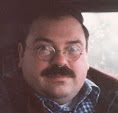
As I’ve mentioned before, I live about a half mile from the Delaware River in west-central New Jersey. Several weeks ago I drove a few miles north to one of the few bridges across the river at Riegelsville, Pennsylvania. The bridge was built by Roebling & Sons of New Jersey in 1904, the same firm that built the Brooklyn Bridge. It’s a beautiful suspension bridge, one of a handful of continuous wire-rope suspension bridges in the country. For all that, it’s a small, country-sized bridge that replaced the original covered bridge built there in the 1830’s though it uses the original stone supports. I drive across this bridge every day as I go to and from work in Easton, Pa.
Anyway, it was one of the local sites I wanted to capture in an etching and I decided this was a good weekend to make the plate and pull a proof or two. I still have a lot to learn about drawing, etching and printmaking and I took a few more small steps forward through working on this project.
I would very much appreciate hearing them people's opinions about problems. In my opinion the image is too light. I don't think this was because of the biting but with the needling or, to go back even further, with the grounding. I used a standard liquid hard ground but since I had problems with a previous plate where the acid leeched through a bit I decided to put two coats on this time. That may still have worked out but I didn’t account for that extra thickness when I needled the plate and I did clear the lines properly. They looked OK up to a point, and my lack of experience told me they were OK, but in reality they still had some measure of the ground left on them. This resulted in some lines not coming out at all and others that were very light or incomplete.
I don’t necessarily think that proved to be a complete disaster, but there are some elements that I wish were not so spotty and the lines I needled for the water are pretty much nonexistent. Again, I would appreciate opinions on this. I was not going for an architectural copy of the bridge but an impressionistic interpretation having drawn it from nature. I do think I will add some dry point to give some appearance to the water.
On the other hand, this is my first real drawing from nature turned into an etched plate and a print. So whatever its faults, I’m excited and pleased.
Here are the facts: Bridge over the Delaware River at Riegelsville, Penna.; 3” x 4” copper plate etching from nature; Graphic Chemical’s bone black etching ink on their generic cotton house paper.





+With+Press+cropped.jpg)


